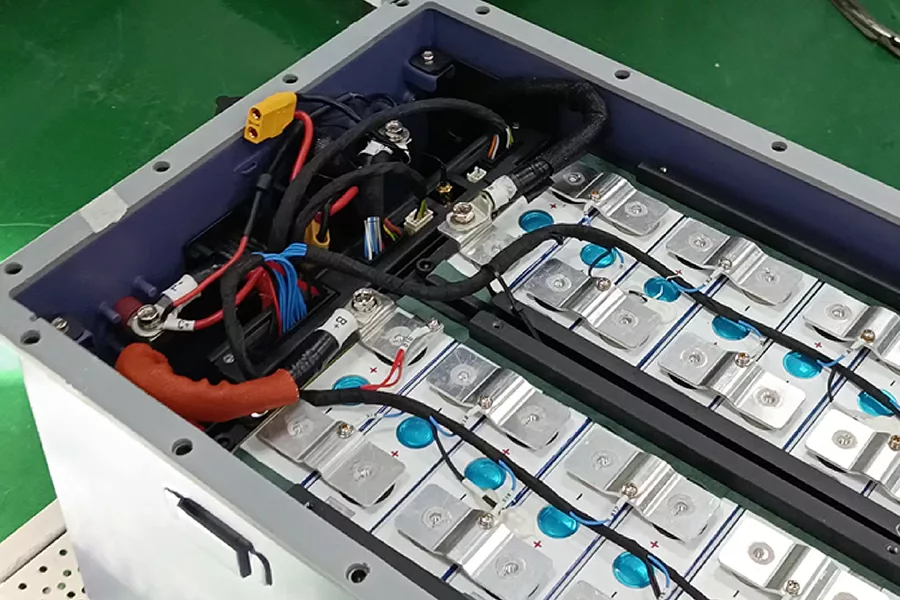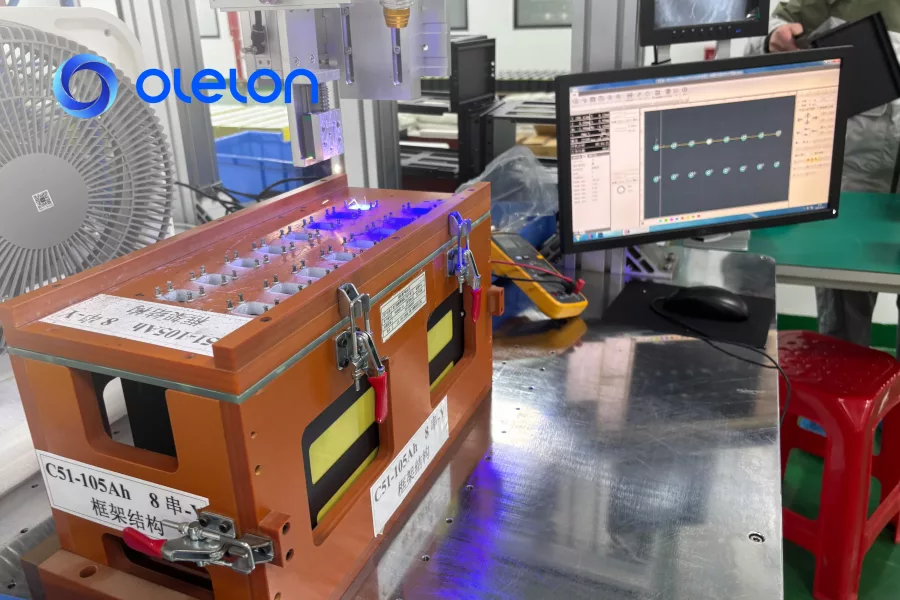The use of a 3000W laser welding machine in the Olelon battery factory offers several advantages for the battery manufacturing process:
1. Improved Welding Quality & Reliability:
-
Higher precision: Laser welding can precisely control energy input, reducing weld deformation and improving the quality of the weld.
-
Better consistency: Compared to traditional methods like resistance or ultrasonic welding, laser welding ensures uniform weld quality, reducing the risk of battery failure due to poor welding.
-
Stronger welds: The laser welds ensure a solid connection between the battery tabs, ears, and cells, improving the overall durability of the battery structure.

2. Stable Welding in Tight Battery Structures:
-
Laser welding provides more consistent quality, even in high-density battery designs, where traditional welding might struggle with heat control or stability.
3. Increased Production Efficiency & Cost Reduction:
-
Fast welding speed: The laser can weld in milliseconds, which speeds up the production line and increases throughput.
-
Reduced labor costs: Automation can be integrated with laser welding to reduce manual intervention and improve the automation level of the production line.
-
Lower material waste: Laser welding has a small heat-affected zone, minimizing material loss and improving product consistency and yield.
4. Compatibility with Various Materials:
-
Laser welding is compatible with a range of conductive materials such as aluminum, copper, stainless steel, and nickel, which allows it to meet diverse battery design needs.
-
It offers flexibility with various welding techniques, such as spot welding, seam welding, and butt welding, to accommodate different battery types like square, cylindrical, and pouch cells.
5. Compliance with Industry Standards:
-
Laser welding processes meet the requirements of safety and quality standards such as UL, IEC, and other certifications, ensuring that the batteries produced are reliable and safe.
Welding Techniques Comparison:
-
Resistance welding: A more traditional method but can have lower precision and is more prone to heating issues.
-
Ultrasonic welding: Less suited for high-strength welds and can be affected by material thickness.
-
Laser welding: Provides superior control over energy input, leading to better consistency, higher strength, and the ability to work with a broader range of materials.
Impact on EVs (Electric Vehicles):
-
In applications like electric vehicles, poor welds can lead to overheating at the weld points, which may require extra cooling systems.
-
If the welds loosen during operation, it can disrupt the electrical supply, potentially causing critical failures in the EV’s function.
| Issue | Traditional Welding (Resistance / Ultrasonic) | Laser Welding (Especially 3000W) |
|---|---|---|
| Heat Generation | Prone to localized overheating; high resistance at weld points | Concentrated energy, small weld area, reduced thermal impact |
| Weld Loosening | Poor bonding at joints; easily affected by vibration | Deep penetration welds; strong joints with excellent vibration resistance |
| Welding Precision | Small cracks may form, affecting battery lifespan | High-precision, non-contact welding; fewer defects |
| Production Efficiency | Slower speed, difficult to automate for mass production | High-speed welding, supports automated manufacturing |
| Material Compatibility | Limited to specific materials; restricted welding methods | Compatible with various materials like aluminum, copper, stainless steel, etc. |
Laser welding’s precision and efficiency make it ideal for the production of high-quality, durable batteries for applications in demanding environments like electric vehicles.

